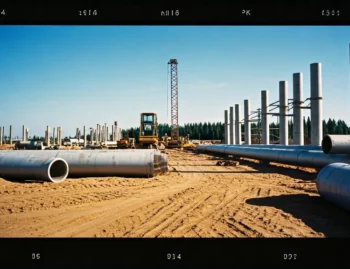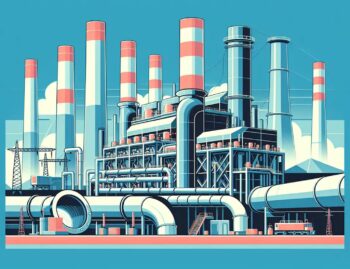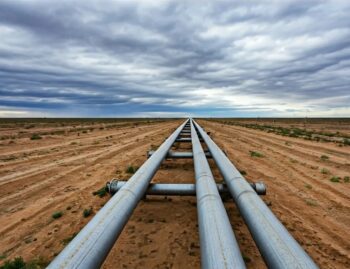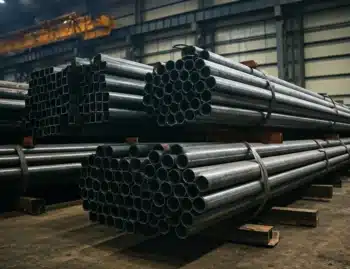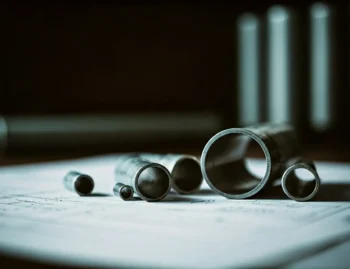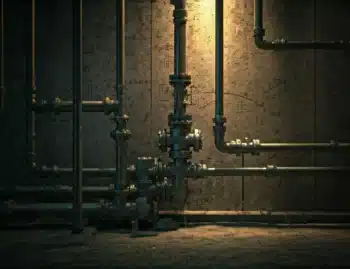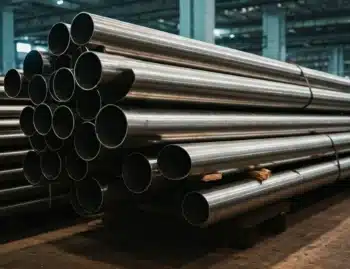
1. What Are Welded Pipes?
Welded pipes are an engineering marvel, seamlessly blending form and function. Created by molding metal into a tubular shape and welding it at the intersection, these pipes provide crucial support across various industries. Their importance in infrastructure cannot be overstated; they are the backbone of systems like water supply and sewage management. Interestingly, the advancement in welding technologies has significantly enhanced the durability and utility of these pipes, making them a preferred choice for many.
The sheer versatility of welded pipes is impressive. They can be crafted in different sizes, thicknesses, and materials to suit specific project needs. Whether it’s in the sprawling networks of oil pipelines or the more confined spaces of household plumbing, their adaptability is a primary reason for their widespread adoption. As you delve deeper, you’ll find that welded pipes represent a perfect blend of scientific innovation and practical application.
2. How Are Welded Pipes Made?
The production of welded pipes begins with a flat sheet of metal, typically steel, which is rolled into a cylindrical shape. The critical step is the welding process where the edges are fused together using high heat. This can be done through techniques such as Electric Resistance Welding (ERW), which relies on electrical currents to heat the metal for fusion, thereby ensuring a strong bond. The welded seam is often subjected to rigorous testing to ensure it meets industry standards, thereby guaranteeing its performance in demanding environments.
Another popular method is Submerged Arc Welding (SAW), especially in creating larger diameter pipes. This technique involves the use of an arc beneath a bed of flux, which protects the weld from contamination and provides excellent structural integrity. The type of welding process used usually depends on the application and the specific characteristics desired in the pipe, such as flexibility and pressure tolerance.
3. What Materials Are Used in Welded Pipes?
The choice of material for welded pipes plays a pivotal role in determining their functionality and longevity. Stainless steel is a popular option due to its corrosion resistance, making it suitable for applications involving exposure to moisture or chemicals. Carbon steel, on the other hand, is favored for its strength and ability to withstand high pressures, which is essential in petroleum industries and heavy-duty applications.
In recent years, advances in metallurgy have introduced alloyed varieties, offering enhanced mechanical properties for specialized purposes. Nickel-based alloys, for instance, are employed when resistance to extreme temperatures is required, while titanium alloys may be selected for their remarkable strength-to-weight ratio.
4. Where Are Welded Pipes Commonly Used?
Welded pipes are omnipresent across a myriad of sectors. In the world of construction, they are vital components in building frameworks, HVAC systems, and scaffolding. The oil and gas industry heavily depends on them for the safe and efficient transport of fluids over vast distances. Automobiles also see their use in exhaust systems and engine components, demonstrating their versatility and essential role in daily life.
Moreover, industries such as agriculture and sanitation leverage welded pipes for irrigation and drainage systems, illustrating how indispensable they are to our modern infrastructure. Their ability to be customized in size and shape makes them ideal for specialized projects beyond conventional applications.
5. How Do Welded Pipes Compare to Seamless Pipes?
Understanding the distinction between welded and seamless pipes helps in making informed decisions for specific applications. Welded pipes, thanks to their straightforward manufacturing process, tend to be more affordable and are more readily available in longer lengths. This efficiency is advantageous in projects where the uniformity of the pipe is not critically required.
Conversely, seamless pipes, manufactured through a more complex process of extrusion, offer a uniform grain structure and generally higher strength, attributing to their popularity in high-pressure environments. The absence of a seam in these pipes eliminates the prevalent risk of weak points, making them preferable in situations where reliability is paramount, despite their higher cost.
6. Are Welded Pipes Reliable?
The reliability of welded pipes is contingent on the quality of manufacturing and the materials used. When produced under stringent quality control protocols, welded pipes exhibit commendable integrity and durability. They undergo extensive testing, including hydrostatic testing and non-destructive examinations like ultrasonic or radiographic testing, to verify the welded seam’s strength and detect any potential defects.
7. What Are the Advantages of Using Welded Pipes?
Welded pipes present an array of advantages making them a favored choice across industries. Notably, their cost-effectiveness stands out—they require less labor and material to produce compared to seamless pipes. This economic factor is crucial for large-scale installations wanting to manage budgets effectively.
Moreover, their availability in diverse sizes and ease of customization offer flexibility in their application, from residential plumbing to large industrial systems. The simplicity in manufacturing also translates into shorter lead times, ensuring that projects can proceed without significant delays.
8. Can Welded Pipes Be Used for High-Pressure Applications?
Welded pipes can indeed be engineered to handle high-pressure applications, particularly when fabricated from robust materials like carbon steel. However, seamless pipes are traditionally chosen for extreme conditions due to their higher reliability and reduced risk of failure.
9. What Are Common Welding Techniques in Pipe Production?
Each welding technique deployed in pipe manufacture has its advantages. Electric Resistance Welding (ERW) is touted for its efficiency, ideal for mass production of pipes with smaller diameters. Longitudinal Submerged Arc Welding (LSAW), meanwhile, offers precision and strength for producing large diameter pipes needed for critical infrastructure.
Spiral Submerged Arc Welding (SSAW) is another method known for its flexibility in joining various spiral angles and is commonly used for transporting fluids and gases owing to the uniform thickness and robustness of the weld line. Each method provides specific benefits depending on the application, environment, and cost considerations.
10. How to Verify the Quality of a Welded Pipe?
Ensuring the quality of a welded pipe involves a series of rigorous inspections. Non-destructive testing (NDT) methods like ultrasonic testing use sound waves to detect inconsistencies in the weld, guaranteeing its durability without compromising the pipe’s integrity. Similarly, radiographic testing employs X-rays to uncover internal imperfections, offering a thorough analysis of the weld.
11. Are There Environmental Benefits to Using Welded Pipes?
An often overlooked advantage of welded pipes lies in their environmental impact. Many welded pipes are crafted from recycled materials, showcasing a commitment to sustainable practices in manufacturing. Moreover, at the end of their operational life, these pipes are recyclable, contributing to a circular economy and reducing waste in the process.
12. What Should Be Considered When Choosing Welded Pipes?
Selecting the right welded pipe involves contemplating several factors, from environmental conditions to pressure requirements and budget constraints. It’s crucial to consult with experts who can offer guidance based on specific project needs, ensuring the chosen materials and pipe specifications align with intended usage. With the right guidance, welded pipes can be both economical and exceptionally functional support systems.
Understanding these aspects allows planners to make informed decisions, preventing potential issues related to misaligned specifications or unforeseen environmental impacts. This consultative approach ensures that the pipes chosen are not only fit for purpose but contribute to the overall efficiency and longevity of the infrastructure they support.


